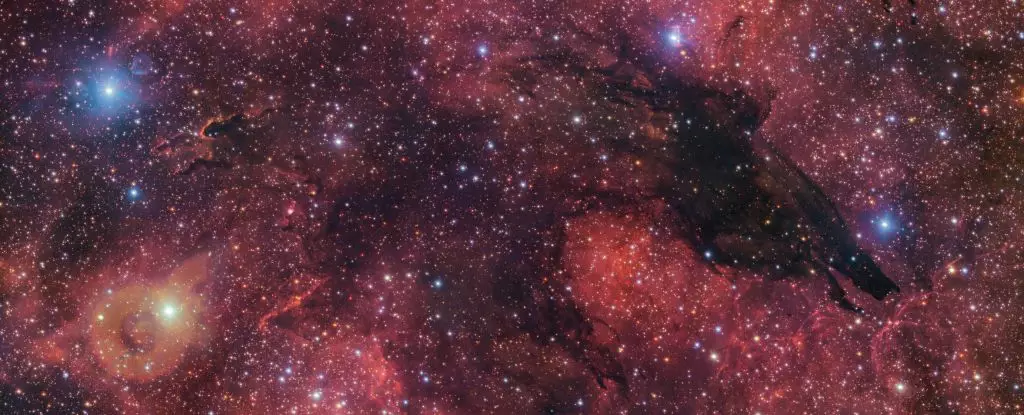In the grand tapestry of the universe, mythology and scientific discovery often intertwine, revealing intricate relationships between life, death, and rebirth. The Norse myth of Ragnarök paints a picture of cataclysm, where the ravenous wolf Sköll captures the Sun, signaling the end of celestial order. Yet, in the cosmic expanse, there exists a counterpoint to this narrative—the Dark Wolf Nebula. This haunting dark mass, located 5,300 light-years from Earth in the constellation of Scorpius, serves as a cradle for new stars rather than a vacant graveyard of cosmic debris. Ironically, in its apparent emptiness, the Dark Wolf Nebula embodies creation, emerging not as an end but as a beginning.
Often mistaken for a void where light meets its demise, the Dark Wolf Nebula is, in reality, a dark nebula—a dense collection of dust and gas with the remarkable ability to obscure visible light. This phenomenon creates an enigmatic facade that masks one of the universe’s most essential processes: star formation. Situated within a broader structure known as Gum 55, the Dark Wolf Nebula contrasts sharply with the nebula’s luminous surroundings. Its presence unveils the hidden work of gravity, which compacts and coalesces the dense materials into cores that will eventually ignite into stars.
Within this masqued realm, the intricate processes of star formation are at play. As temperatures in these dense clouds drop, gravitational forces take hold, pulling together clumps of gas and dust. This ongoing interaction sets the stage for the birth of binary stars, red giants, and many of the celestial bodies that form our cosmic neighborhood.
Studying the formation of stars within such dense clouds presents significant challenges. The light produced during the early phases of the stellar lifecycle is often rendered invisible to traditional telescopes. However, advancements in infrared astronomy have ushered in a new era of understanding. Instruments like the James Webb Space Telescope (JWST) are meticulously designed to capture the infrared wavelengths that pierce through the thick clouds of dust, unveiling the stellar nurseries hidden within the Dark Wolf Nebula.
JWST’s state-of-the-art capabilities allow scientists to study the conditions under which stars are born, shedding light on their growth and the environments that foster their emergence. However, infrared observations are merely one piece of the puzzle. Complementary studies across the full spectrum of electromagnetic wavelengths are necessary to construct a thorough understanding of the complex dynamics at play. Visible-light images, such as those captured by the VLT Survey Telescope, provide vital information about the structure and composition of the nebula itself, further contributing to the narrative of star life.
Cycle of Stellar Renewal
The narrative of star formation within the Dark Wolf Nebula serves as a testament to the cyclical nature of the cosmos. Just as Sköll’s insatiable hunger signals destruction, the life-giving processes within dark nebulae like the Dark Wolf reassert the concept of celestial rebirth. As emerging stars evolve, they emit intense radiation and stellar winds that will eventually shape their surrounding environments, causing the very clouds from which they were born to dissipate.
This balance of creation and annihilation occupies a delicate continuum in cosmic existence. The unique interplay between bright stars and their dark birthing grounds not only highlights the myriad processes governing the formation of celestial bodies but enriches our understanding of the universe’s history and future.
The Dark Wolf Nebula stands as a fascinating paradox in our quest to comprehend the cosmos. Its dual role as a site of birth amid the narrative of death offers rich avenues for exploration and inquiry. The universe, with its myths and science, invites us to contemplate the majestic cycles of existence that shape our reality. As we gaze into the depths of the Dark Wolf Nebula, we are reminded that even in the darkness, the promise of creation shines brightly, illuminating the boundless mysteries and stories waiting to be uncovered in the cosmic tapestry.

